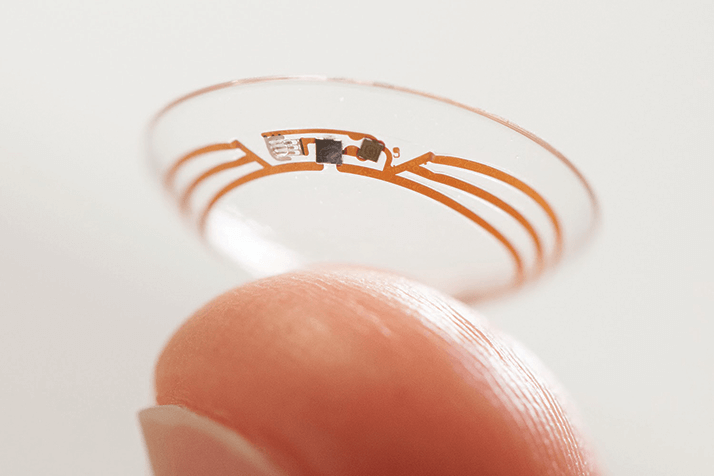
Google’s X laboratory, according to its co-supervisor, Astro Teller, aims to “improve technologies by a factor of 10” (hence the X) and to develop “science-fiction-sounding solutions.” The recently-announced Google contact lens (1) is the fourth X-project described, joining Google Glass, the Google Driverless Car and Project Loon, which uses balloons in the stratosphere to deliver internet to all.
The rationale for the contact lens is this: most diabetic patients find it hard to control their blood glucose levels, and fingerprick glucose monitoring is both painful and bothersome. Poor glucose control leads to myriad diseases and complications, so improved monitoring of blood glucose is a step in the right direction. It has long been known that glucose levels can be measured in tears. Google researchers have combined this knowledge with nanotechnology – tiny processors, tiny glucose sensors, and tiny antennae for both data and power transfer. They’ve produced prototype contact lenses that incorporate red and green LEDs to give wearers instant feedback on their glucose levels, and they are readying to make the project a commercial reality. Google X’s project is not the first wearable contact lenses that senses blood glucose levels in this way. Similar technology was developed some years ago by researchers in Tokyo, Japan (2), and a group at Malmo University in Sweden have now developed a glucose-sensing contact lens that uses tears as fuel (3). But, as with Google Glass, the Google X strategy is to take an existing technology and refine it. The company has the resources and ambition to get the product to market, and the infrastructure to cope with the data avalanche that millions of people wearing these contact lenses will produce. This may prove crucial for its success. The medical device market is not an easy one to succeed in, as the demise of non-invasive glucose-sensing device manufacturers like C8 MediSensors, SpectRx and Fovioptics shows. If anyone can bring the device to the mass market and make an impact, it’s Google.
References
- “Introducing our smart contact lens project”.
- S. Iguchi et al., “A flexible and wearable biosensor for tear glucose measurement”, Biomed Microdevices, 9, 603–609 (2007).
- M. Chu et al., “Biomedical soft contact-lens sensor for in situ ocular biomonitoring of tear contents”, Biomed Microdevices, 13, 603–611 (2011). doi: 10.1007/s10544-011-9530-x.
